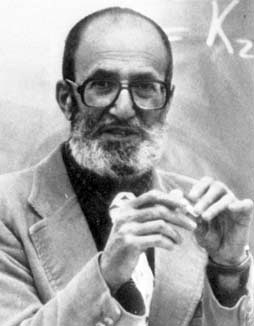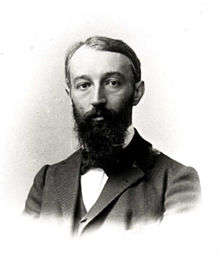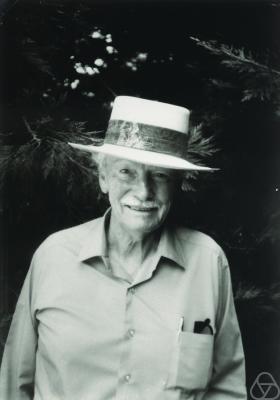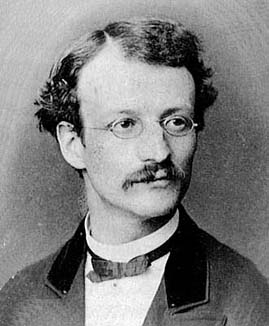Life
Dickson considered himself a Texan by virtue of having grown up in Cleburne, where his father was a banker, merchant, and real estate investor. He attended the University of Texas at Austin, where George Bruce Halsted encouraged his study of mathematics. Dickson earned a B.S. in 1893 and an M.S. in 1894, under Halsted's supervision. Dickson first specialised in Halsted's own specialty, geometry. [2]
Both the University of Chicago and Harvard University welcomed Dickson as a Ph.D. student, and Dickson initially accepted Harvard's offer, but chose to attend Chicago instead. In 1896, when he was only 22 years of age, he was awarded Chicago's first doctorate in mathematics, for a dissertation titled The Analytic Representation of Substitutions on a Power of a Prime Number of Letters with a Discussion of the Linear Group, supervised by E. H. Moore.
Dickson then went to Leipzig and Paris to study under Sophus Lie and Camille Jordan, respectively. On returning to the US, he became an instructor at the University of California. In 1899 and at the extraordinarily young age of 25, Dickson was appointed associate professor at the University of Texas. Chicago countered by offering him a position in 1900, and he spent the balance of his career there. At Chicago, he supervised 53 Ph.D. theses; his most accomplished student was probably A. A. Albert. He was a visiting professor at the University of California in 1914, 1918, and 1922. In 1939, he returned to Texas to retire.
Dickson married Susan McLeod Davis in 1902; they had two children, Campbell and Eleanor.
Dickson was elected to the National Academy of Sciences in 1913, and was also a member of the American Philosophical Society, the American Academy of Arts and Sciences, the London Mathematical Society, the French Academy of Sciences and the Union of Czech Mathematicians and Physicists. Dickson was the first recipient of a prize created in 1924 by The American Association for the Advancement of Science, for his work on the arithmetics of algebras. Harvard (1936) and Princeton (1941) awarded him honorary doctorates.
Dickson presided over the American Mathematical Society in 1917–1918. His December 1918 presidential address, titled "Mathematics in War Perspective", criticized American mathematics for falling short of those of Britain, France, and Germany:
- "Let it not again become possible that thousands of young men shall be so seriously handicapped in their Army and Navy work by lack of adequate preparation in mathematics."
In 1928, he was also the first recipient of the Cole Prize for algebra, awarded annually by the AMS, for his book Algebren und ihre Zahlentheorie.
It appears that Dickson was a hard man:
- "A hard-bitten character, Dickson tended to speak his mind bluntly; he was always sparing in his praise for the work of others. ... he indulged his serious passions for bridge and billiards and reportedly did not like to lose at either game." [3]
- "He delivered terse and unpolished lectures and spoke sternly to his students. ... Given Dickson's intolerance for student weaknesses in mathematics, however, his comments could be harsh, even though not intended to be personal. He did not aim to make students feel good about themselves." [4]
- "Dickson had a sudden death trial for his prospective doctoral students: he assigned a preliminary problem which was shorter than a dissertation problem, and if the student could solve it in three months, Dickson would agree to oversee the graduate student's work. If not the student had to look elsewhere for an advisor." [4]
The algebraist
In 1901, Dickson published his first book Linear groups with an exposition of the Galois field theory, a revision and expansion of his Ph.D. thesis. Teubner in Leipzig published the book, as there was no well-established American scientific publisher at the time. Dickson had already published 43 research papers in the preceding five years; all but seven on finite linear groups. Parshall (1991) described the book as follows:
- "Dickson presented a unified, complete, and general theory of the classical linear groups—not merely over the prime field GF(p) as Jordan had done—but over the general finite field GF(pn), and he did this against the backdrop of a well-developed theory of these underlying fields. ... his book represented the first systematic treatment of finite fields in the mathematical literature."
An appendix in this book lists the non-abelian simple groups then known having order less than 1 billion. He listed 53 of the 56 having order less than 1 million. The remaining three were found in 1960, 1965, and 1967.
Dickson worked on finite fields and extended the theory of linear associative algebras initiated by Joseph Wedderburn and Cartan.
He started the study of modular invariants of a group.
In 1905, Wedderburn, then at Chicago on a Carnegie Fellowship, published a paper that included three claimed proofs of a theorem stating that all finite division algebras were commutative, now known as Wedderburn's theorem. The proofs all made clever use of the interplay between the additive group of a finite division algebra A, and the multiplicative group A* = A − {0}. Karen Parshall noted that the first of these three proofs had a gap not noticed at the time. Dickson also found a proof of this result but, believing Wedderburn's first proof to be correct, Dickson acknowledged Wedderburn's priority. But Dickson also noted that Wedderburn constructed his second and third proofs only after having seen Dickson's proof. She concluded that Dickson should be credited with the first correct proof. [5]
Dickson's search for a counterexample to Wedderburn's theorem led him to investigate nonassociative algebras, and in a series of papers he found all possible three and four-dimensional (nonassociative) division algebras over a field.
In 1919 Dickson constructed Cayley numbers by a doubling process starting with quaternions  . [6] His method was extended to a doubling of
. [6] His method was extended to a doubling of  to produce
to produce  , and of
, and of  to produce
to produce  by A. A. Albert in 1922, and the procedure is known now as the Cayley–Dickson construction of composition algebras.
by A. A. Albert in 1922, and the procedure is known now as the Cayley–Dickson construction of composition algebras.
The number theorist
Dickson proved many interesting results in number theory, using results of Vinogradov to deduce the ideal Waring theorem in his investigations of additive number theory. He proved the Waring's problem for  under the further condition of
under the further condition of

independently of Subbayya Sivasankaranarayana Pillai who proved it for  ahead of him. [7]
ahead of him. [7]
The three-volume History of the Theory of Numbers (1919–23) is still much consulted today, covering divisibility and primality, Diophantine analysis, and quadratic and higher forms. The work contains little interpretation and makes no attempt to contextualize the results being described, yet it contains essentially every significant number theoretic idea from the dawn of mathematics up to the 1920s except for quadratic reciprocity and higher reciprocity laws. A planned fourth volume on these topics was never written. A. A. Albert remarked that this three volume work "would be a life's work by itself for a more ordinary man."
In mathematics, a global field is one of two types of fields that are characterized using valuations. There are two kinds of global fields:

Paul Richard Halmos was a Hungarian-born American mathematician and statistician who made fundamental advances in the areas of mathematical logic, probability theory, statistics, operator theory, ergodic theory, and functional analysis. He was also recognized as a great mathematical expositor. He has been described as one of The Martians.

Claude Chevalley was a French mathematician who made important contributions to number theory, algebraic geometry, class field theory, finite group theory and the theory of algebraic groups. He was a founding member of the Bourbaki group.

Christian Hugo Eduard Study was a German mathematician known for work on invariant theory of ternary forms (1889) and for the study of spherical trigonometry. He is also known for contributions to space geometry, hypercomplex numbers, and criticism of early physical chemistry.

Ivan Morton Niven was a Canadian-American mathematician, specializing in number theory and known for his work on Waring's problem. He worked for many years as a professor at the University of Oregon, and was president of the Mathematical Association of America. He was the author of several books on mathematics.
Francis Joseph Murray was a mathematician, known for his foundational work on functional analysis, and what subsequently became known as von Neumann algebras. He received his BA from Columbia College in 1932 and PhD from Columbia University in 1936. He taught at Duke University.

Nathan Jacobson was an American mathematician.

Joseph Henry Maclagan Wedderburn FRSE FRS was a Scottish mathematician, who taught at Princeton University for most of his career. A significant algebraist, he proved that a finite division algebra is a field, and part of the Artin–Wedderburn theorem on simple algebras. He also worked on group theory and matrix algebra.

Olive Clio Hazlett was an American mathematician who spent most of her career working for the University of Illinois. She mainly researched algebra, and wrote seventeen research papers on subjects such as nilpotent algebras, division algebras, modular invariants, and the arithmetic of algebras.
Joseph Fels Ritt was an American mathematician at Columbia University in the early 20th century. He was born and died in New York.

Harry Kesten was a Jewish American mathematician best known for his work in probability, most notably on random walks on groups and graphs, random matrices, branching processes, and percolation theory.
Cyrus Colton MacDuffee from Oneida, New York was a professor of mathematics at University of Wisconsin. He wrote a number of influential research papers in abstract algebra. MacDuffee served on the Council of the American Mathematical Society (A.M.S.), was editor of the Transactions of the A.M.S., and served as president of the Mathematical Association of America (M.A.A).

Georg Scheffers was a German mathematician specializing in differential geometry.
Henry P. McKean, Jr. is an American mathematician at the Courant Institute in New York University. He works in various areas of analysis. He obtained his PhD in 1955 from Princeton University under William Feller.
John Williamson was a Scottish mathematician who worked in the fields of algebra, invariant theory, and linear algebra. Among other contributions, he is known for the Williamson construction of Hadamard matrices. Williamson graduated from the University of Edinburgh with first-class honours in 1922. Awarded a Commonwealth Fellowship in 1925, he studied at the University of Chicago under the direction of L. E. Dickson and E. H. Moore, receiving the Ph.D. in 1927. He held a Lectureship in Mathematics at the University of St Andrews and an Associate Professorship in Mathematics at Johns Hopkins University.
Moss Eisenberg Sweedler is an American mathematician, known for Sweedler's Hopf algebra, Sweedler's notation, measuring coalgebras, and his proof, with Harry Prince Allen, of a conjecture of Nathan Jacobson.
In real analysis and approximation theory, the Kolmogorov–Arnold representation theorem states that every multivariate continuous function can be represented as a superposition of the two-argument addition of continuous functions of one variable. It solved a more constrained form of Hilbert's thirteenth problem, so the original Hilbert's thirteenth problem is a corollary.
Lloyd Lyne Dines was an American-Canadian mathematician, known for his pioneering work on linear inequalities.
Benjamin Abram Bernstein was an American mathematician, specializing in mathematical logic.
David Drasin is an American mathematician, specializing in function theory.














